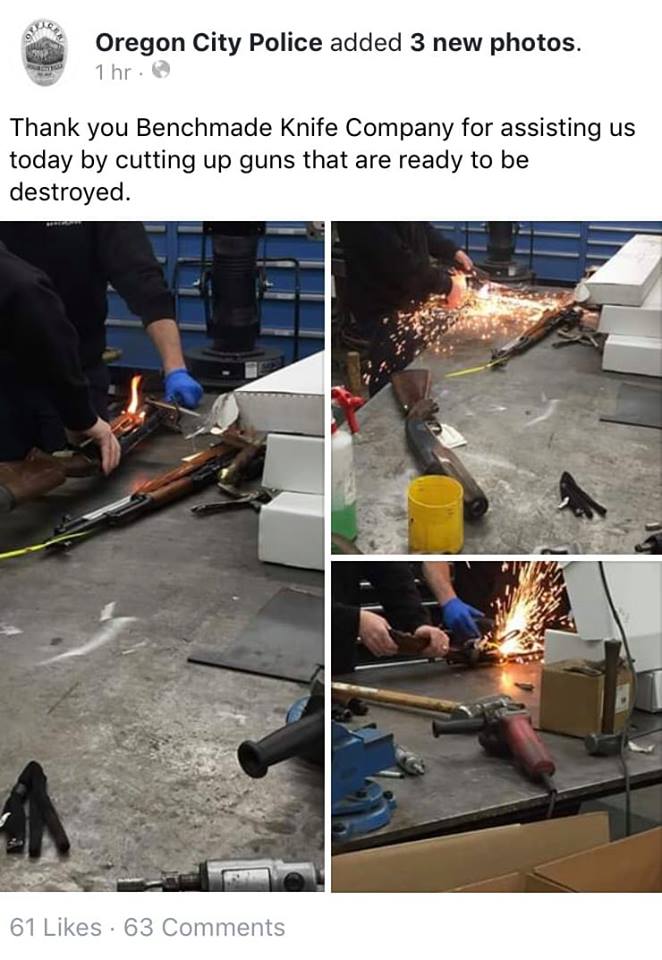*NOTE: This is a transcript of my segment on Assorted Calibers Podcast episode 35*
Welcome to Oddball
Corner Pocket. For this week, I thought I’d talk about the
different kinds of knife locks, and why you might want to use one
over the other. This will probably be another drinking game
candidate. This time with the word “lock.” The same warning
applies as with the segment on grinds.
The thing that makes
pocket knives convenient to carry is also probably there biggest
weakness. Namely, the fact that they fold. Sure, it makes them
compact, since their close to half the length closed as they are
open, but they also can close when you don’t want them. Since your
fingers are usually in the path of the blade if it folds while you’re
using it, you can hopefully see why this is bad.
The first folding
pocket knives were friction folders. As the name implies, the only
thing that keeps the knife blade open or closed is friction at the
pivot point. Some designs, like the Svord Peasant knife, and old
school straight razors get around this by having an exposed tang, or
metal extending past the where the blade meets the pivot. You can
keep your thumb against the tang while using the knife, and therefor
stopping it from closing on you. This design actually works pretty
well, but also means that it can open pretty easily when you don’t
want it to… like while it’s in your pocket.
There are some other
designs that don’t have this feature. This means that they’re
less likely to open in your pocket, but it also means that they are
much more likely to close on you when you don’t want them to.
Fortunately, most
non-locking knives for probably the past couple hundred years have
used what’s called a slip joint. A slip joint has a spring along
the spine of the knife that causes the blade to want to stay in
either the fully open or fully closed position. Most people have
used one of these. Your standard Swiss Army knife and old fashioned
Case knives use this design. It’s a much safer design than a
friction folder. Unfortunately, while I’ve never had one of these
open when I didn’t want it to, I have had one close on me.
While there have
been locking of various types for centuries, surprisingly, they
weren’t really all that popular until the 1960’s, with the famous
Buck 110 and it’s back lock. It’s a similar design to the slip
joint, except the back bar actually latches into the back of the
blade instead of just laying against it. That means that you have to
push against it to unlock the blade and close the knife. Depending
on where exactly the point that you’re supposed to push on it, this
style lock may be referred to as a back lock, mid lock, or spine
lock. Oh, and I’m going to include Cold Steel’s “tri-ad”
lock in this type of lock, since it’s pretty much the same thing
with an added pin to handle some abuse.
This is a very solid
locking mechanism, and is probably the strongest out there. The main
issue with this lock is that it is difficult to close. Depending on
exactly where the divot for you to press is, it can be pretty much
impossible, like the Buck 110, or tricky until you figure it out,
like the Spyderco Endura.
Push things up to
really the 1990’s, and folks started using what are called liner
locks and frame locks. Instead of having the locking device on the
spine of the handle, runs along the side. When you open the knife, a
piece of metal will spring out into the empty part of the handle and
wedge itself against the blade. This metal may be part of the liner
and covered by a scale on the handle (hence “liner lock”), or the
handle may be one piece, and the cut out is exposed (this is
typically referred to as a frame lock). In my mind, there really
isn’t any difference between these two lock types, but custom knife
maker Michael Walker received a patent and trademark on the liner
lock in the 80’s, so I’d suspect that the frame lock was a work
around. To disengage these locks, you simply push the liner or frame
out of the way of the blade, and close the knife.
While this design
isn’t as strong as the back lock, it does allow for some things
that the back lock won’t. Once you get past the detente spring
that holds it closed, a frame or liner lock tends to be a smoother
action than the back lock. Since the locking device isn’t running
down the spine of the handle, you can use spacers in between the two
liners instead of having a solid bar. This is often done to save
weight. It also allows for newer design features like flipper
openers where you can quickly flick the knife open. Oh, and it is
significantly easier to close the knife one handed using this style
of lock.
The frame and liner
lock designs have become incredibly popular these days, probably to
the point of being used more than anything else. I would say that
most “modern” locking knives are of this type.
There is a variation
on the frame lock called the compression lock. Basically, instead of
having the locking device wedge itself near the edge side of the
blade, it engages by the spine. For various reasons, it’s
generally considered to be a little stronger than frame or liner
locks, but I consider these types of locks to be closely related. To
my knowledge, Spyderco is the only company that uses this style of
lock.
The last type of
lock I’m going to talk about is the Axis lock. Until a couple
years ago, Benchmade had a patent on this type of lock, and was
pretty much the only company to use it. There have been a couple
companies, like Spyderco with their “ball lock” that made
something very similar, and, since the patent ran out, I know Ganzo
has been making knives using the Axis lock.
With this style
lock, there is a spring loaded bar that goes across the back of the
blade at the pivot, and stops it from closing. This makes for a very
strong lock up in most uses, and I’ve seen handles break before the
lock failed. To close the knife, you simply pull back on the bar,
and shut the blade. Since there is no detente ball or spring
applying pressure directly to the blade, this can make for a very
smooth action, to the point that all you have to do is pull back on
the lock bar, and let gravity do the work for you. While, at the
same time, I’ve seen designs where the blade is secure enough, that
it’s honestly a little difficult to intentionally deploy the knife
without pulling on the lock bar. The one downside that I see to this
style of lock is that, as Benchmade designed it, it relies on a small
omega spring to work the lock bar. It’s a relatively fragile
spring, and has been known to break after a few years of heavy use.
Oh, and the design has been known to fail if you’re doing something
like batoning, where the knife is struck rather hard.
I
hope this helps you guys understand the different locks, and why you
might choose one over the other. I
will say that whatever lock system you choose, if it’s a decent
quality knife, you should be able to rely on it during everyday use.
If you’re a bit abusive towards your knife, you might want to
choose a back lock of some kind, but I’ve never been worried about
a frame lock failing on me during regular cutting jobs. Of course,
if you’re the type that like to baton with your knife, use it as a
step with it sticking out of a tree, etc… just get a good fixed
blade and use that.







